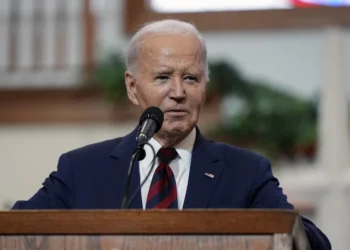The economy contracted at an 0.2% annual rate in the first quarter of 2025, a slightly better revision to the preliminary gross domestic product numbers.
The latest data, reported by the Bureau of Economic Analysis on Thursday morning, show the challenges that the economy and President Donald Trump face in the coming months. They are also concerning to economists and raise concerns about the potential for a recession.
This is the second of three GDP revisions that the BEA will do for the first quarter numbers as more data is analyzed. The final report will come in late June. The preliminary report said the economy contracted by 0.3%.
The decline in GDP is a notable shift from the final quarter of last year, which saw economic output increase by a solid 2.4%. It also marks the only time, other than one quarter in 2022, that the economy has contracted since the pandemic.
Trump’s early tenure has been marked by his aggressive tariff policy. The imposition of major tariffs on countries all around the world in April led to a major decline in stock prices and rising fears of recession. In recent weeks, though, the stock market has risen as Trump has backed off some of the tariffs and attempted to strike trade deals.
It is complicated to gauge when recessions begin and end, but those in government and most economists look to the National Bureau of Economic Research, a private group, to declare one.
NBER defines a recession as “a significant decline in economic activity that is spread across the economy and that lasts more than a few months,” although there is a historical precedent of labeling two consecutive quarters of negative economic growth recessionary. The periods feature rising unemployment.
GOP TAX BILL WILL CLEAR SENATE 95% INTACT, HOUSE CHAIRMAN PREDICTS
The Federal Reserve has a complicated job right now. It has kept interest rates higher to quash inflation, but if GDP continues to soften, it might be forced to lower rates to help stave off a recession.
Other economic data, though, has been more encouraging. For instance, inflation as gauged by the consumer price index rose only 2.3% over the past year. That is coming within spitting distance of the Federal Reserve’s 2% level.

















